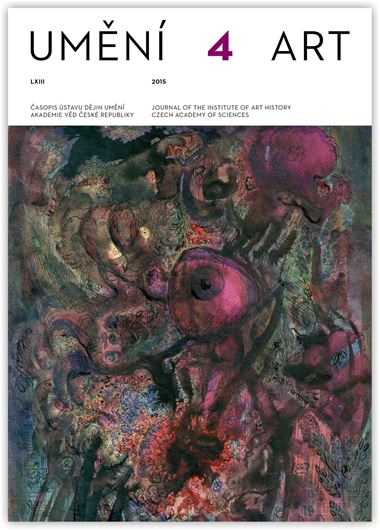Jana Zapletalová
Malíř Giovanni Carlone na Moravě. Stará Voda
The now run-down Church of St James the Great and St Anne, located in what used to be the village Stará Voda in what is today Libavá Military Training Area, was in the late 17th century one of the most important pilgrimage sites in the Olomouc diocese. The figure behind the construction of the new church 1682–1688 was prince-bishop Karl II von Liechtenstein-Castelcorn (1624–1695) who commissioned and sponsored the church’s decorative work. The look of the church and its interior decorations, the earlier appearance of which is now known only from archive materials and photographs, were largely the work of artists from the lake region in Lombardy and Ticino. The architectural plans were created by imperial architect Giovanni Pietro Tencalla (1629–1702) of Bissone, the stonework and sculpture was done by Andrea Aglio (circa 1650–1698) of Arzo, the stucco work was by Matteo Rezzi and by a member of the Fontana family of Chiasso whose first name is not given. A study of the church’s painted decorations, which form the main subject of this article, contributed a new name to the list of known fresco artists working in Moravia in the 17th century: Giovanni Carlone (1636–1713) of Rovio, who painted the centre fresco on the vault of the name and the four allegorical depictions of the continents on the walls. The surviving but severely damaged paintings by Carlone feature an unusual type of iconography that employs emblems. The decorative programme of paintings clearly drew on Jacob Masen’s Speculum imaginum veritatis occultae. The paintings do not employ existing emblems but, like in the basilica in Svatý Kopeček u Olomouce, informed by Masen’s theory the themes are depicted in an imaginative and original fashion. Although the frescoes by Carlone are not as sophisticated as the paintings in the basilica in Svatý Kopeček, some of the paintings share clear compositional similarities. It cannot be ruled out then that Martin Antonín Lublinský (1636–1690) was the person who came up with the iconographic design for the frescoes in Stará Voda. The painted decorations in the church of St James the Great and St Anne are evidence of Karl II von Liechtenstein-Castelcorn’s high ambitions as a patron and of the cultural and intellectual sophistication of the Olomouc region in the late 17th century. on the Treasury corbels. The architecture and reliefs of the portal, sedilia, corbels of the Treasury and small corbel of the north aisle were strikingly coloured in polychrome. This colourfulness can still be seen in some places, and could serve as a basis for a proposed colour reconstruction.
Full-text in the Digital Library of the Czech Academy of Sciences:
https://kramerius.lib.cas.cz/uuid/uuid:1920fc73-36b2-4729-9b24-e4340aeafaa7
< back

